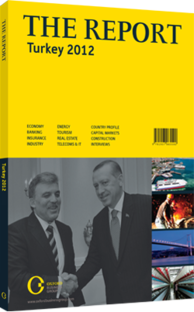OBG talks to Tuncay Özilhan, CEO, Anadolu Group

Interview: Tuncay Özilhan
Is increased competition from foreign companies, which are drawn by demographic growth, squeezing local manufacturers?
TUNCAY ÖZİLHAN: Over the past two decades, Turkey has experienced two major economic transformations. First, it became part of the EU’s Customs Union, and second, following the 2001 financial crisis, Turkey transformed itself into a real market economy through IMF standby agreements. This opened the door to global competitors, and since 2003, the country has ushered in $90bn of foreign direct investment, while in 2011, annual foreign trade volumes reached $375bn.
During this period, the consumer goods segment developed and diversified on both the supply and demand sides. Increased competition did not squeeze local manufacturers; on the contrary, it empowered the domestic industry. Turkish firms adapted to the new market reality of global competition, learned to produce European-quality goods at competitive costs, and exploited the financial flows into Turkey and the increased purchasing power of the nation’s consumer base. At the same time, producers diversified industrial production in terms of both product segments and geographic location of production.
What is the main cause of Turkey’s current account deficit (CAD) and what is being done to offset it?
ÖZİLHAN: The country’s high energy needs and dependency on intermediate goods imports is causing the deficit, which is hovering at around 10% of GDP. The consumer goods segment also plays a small part. A lack of research and development, innovation and advanced technology in many sectors are the principal reasons behind Turkey’s import dependency, however. Machinery imports alone in the past five years have amounted to $180bn.
There are challenges involved in the local production of currently imported goods because industries must increase their productivity through economies of scale and innovation. But the market is large, and therefore, localising production offers many opportunities. A new investment incentive package recently introduced by the government should also encourage Turkish firms to invest and produce goods that can be substituted for imports.
In the event of slowing economic growth, to what extent can per capita income and demographic trends sustain consumer goods producers?
ÖZİLHAN: Turkey’s dynamic, fast growing economy and young population offers great opportunities for the retail market. The country was able to recover very quickly from the global economic crisis in 2008; Turkey was, in fact, extremely well positioned. Internal consumption potential is very high, and there are over 70m people – 60 % of them under 30-years-old – moving the Turkish economy to high consumption.
Macroeconomic and financial stabilisation of the past decade has been accompanied by greater consumer access to financial markets. Household liabilities reached 17% of GDP in 2010, with total housing loans comprising 6.2% of GDP the same year. The number of active credit cards has reached 51m, with a total spending of TL188bn (€79.9bn). This financial expansion has been a major contributor to the rapid growth of private consumption. In 2011 sales growth in some sectors was fantastic – around 15%, with a GDP growth rate of 8.5%. Potential for expansion is still great, and a growth of 4% has been projected for the next three years. Turkish consumers’ tendency to spend money is also still high, despite the ongoing global crisis, and consumer demand has not declined. The retail sector grew to TL300bn (€127.5bn) in 2011, and is expected to reach around TL345bn (€146.63bn) in 2015.
In 2011 Turkey jumped eight spots in AT Kearney’s Global Retail Development Index to 10th place. Such a leap could be evaluated as a sign of the economy’s consumption potential. Under-penetration in many sectors and strong growth potential of per capita national income can sustain private consumption growth.
You have reached the limit of premium articles you can view for free.
Choose from the options below to purchase print or digital editions of our Reports. You can also purchase a website subscription giving you unlimited access to all of our Reports online for 12 months.
If you have already purchased this Report or have a website subscription, please login to continue.

